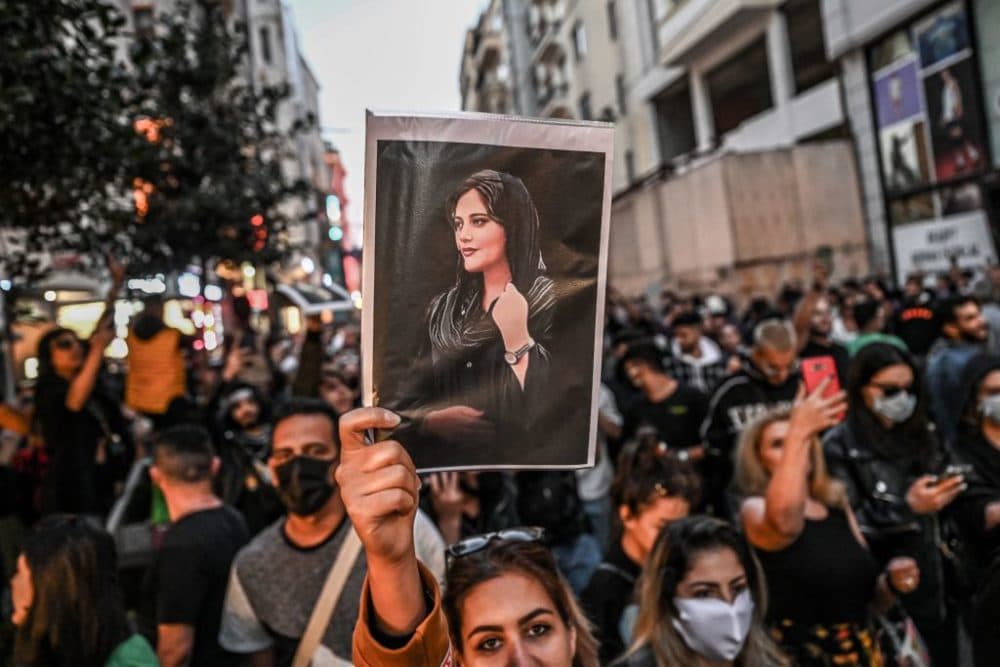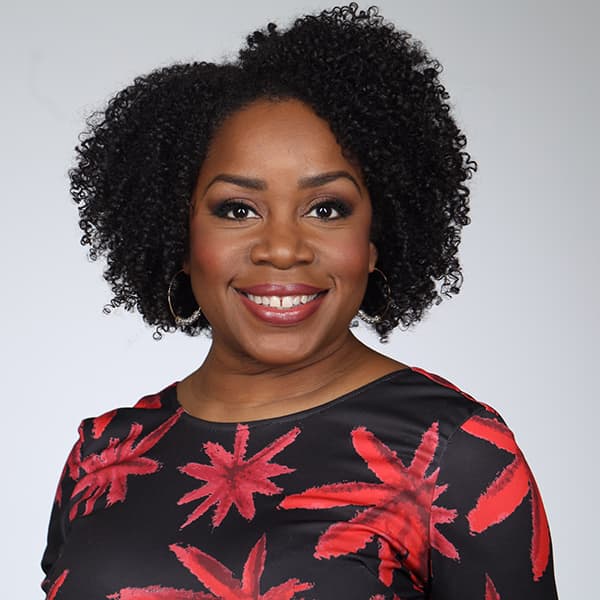Advertisement
Iran's women in revolt
Resume
Sign up for the On Point newsletter here.
For weeks, Iranians have been taking to the streets to protest the rule of their Islamic regime. And women have taken the lead.
Protests began after a 22 year-old by the name of Mahsa Amini died in police custody. She had been accused of improperly wearing a hijab.
"Women have been telling the police — the morality police — it's none of your business, I don't wanna cover my hair," Masih Alinejad said.
But it’s now about much more than that.
Today, On Point: How far will Iran’s protests go?
Guests
Haleh Esfendiari, director emerita of the Middle East Program at the Woodrow Wilson International Center for Scholars.
Roya Hakakian, writer and poet. Her latest book is A Beginner’s Guide to America: For the Immigrant and the Curious. (@RoyaTheWriter)
Interview Highlights
On why Mahsa Amini's death has spurred uprisings in Iran
Roya Hakakian: "It's everybody's story. There's not a single woman in Iran who has walked out of her home, with her hijab on, however she put it on, whether it was strictly abided by the Islamic dress code rules or not. We have all been stopped in our lives, or been warned. And so perhaps what's really most significant about Mahsa is that she's every woman, she's every Iranian woman who has ever walked on the street.
"And her parents have said over and over again that she was not even political, she wasn't even interested in politics. And, in fact, a piece of misreporting in pretty much all of the media is that she had her headscarf on the day that she was stopped. She was stopped not because of her headscarf, but because of a pair of tight pants. Which is, in other words, to say that they will find something wrong with the way you're appearing in order to make a lesson out of you for everyone else out there."
Can you convey the sense of frustration that has built up among women in Iran about this type of scrutiny?
Haleh Esfendiari: "Let me take you a little back to pre-revolutionary Iran. In the marches that were there in 1979, men and women took part. And women were hoping that rights would be expanded, not contracted. So over the years it didn't take long. But over the years women who lived in the Islamic Republic felt as second class citizens. And it didn't matter what kind of class you came from, whether you were religious or not. I mean, some very fundamental rights were denied to you. For example, the way you want to dress when you want to leave the house, or in the case of a person, the personal status law.
"I mean, women were denied from going and seeking a divorce. Child custody was automatically given to the father. The age of marriage was reduced from 18 to 9. At first, university classes, they tried to segregate women, and university classes, they couldn't do it. They segregated schools, elementary and high schools. So over the years, all this unhappiness and delegating women to second class citizens had piled up. And every time there was a demonstration in Iran, women were participating. But this time, they decided they should take the lead in this demonstration."
On what's different about these modern-day protests
Roya Hakakian: "These sets of demonstrations are very different from the ones we've seen over the years. And a friend of mine who lives in Tehran left a message for me last night, confirming exactly that sentiment. That for the first time, it's no longer one particular class, one particular interest group, one particular gender, one particular ethnicity that's coming out to the streets. It's not a demand for salary raises or economic difficulties. It's everybody, every group, every social group, every class, every gender, every ethnicity from throughout Iran, in big and small cities, who have poured into the streets.
"And there is a unifying slogan, woman, life, liberty. And that's really the distinct feature of this round of demonstrations, as opposed to previous ones. A few months ago or perhaps a year ago, you had water demonstrations in southern Iran because of water shortage. Three years ago, there were an economic uprising against rising prices and the slashing of subsidies. So they were mostly tied into economic difficulties. This time around, this revolution has engaged all people from all walks of life, and they all are centered. Or their voices are centered around a single slogan ... 'women, life, liberty.' And that's really the significance of this one."
In the United States, I've seen coverage that hints that these uprisings are about so much more than women speaking up for their rights. It is about the economy. It's about these other factors. But you're saying that this is very specifically something different, that it's specifically about women?
Roya Hakakian: "Of course, there are economic issues that are underlying these demonstrations. There are all sorts of issues. In fact, perhaps the best, most telling example of what this is all about is a song that Shervin Hajipour, an Iranian singer, composed of all the demands that the Iranian people have had over the years that the regime has never been able to address. And it's a song about basically the desire for an ordinary life, the desire to be able to be on the street, kiss without being afraid. The desire about dressing as you wish on the street and not fearing that you may be stopped.
"The desire to be able to go to the university and not be afraid of being booted out because of, you know, something you say to your professor that may offend some religious, you know, belief or not. And he basically composed a song, which is a compilation of all the things that make up an ordinary, peaceful life that Iranians don't have.
"But what has motivated the engine of all these dreams, of all these demands has been the women. And it has been focused on women's desire to be free of the veil because it is the most symbolic manifestation of the regime. And then what unifies all these smaller dreams is the notion of a fundamental liberty that all people from all walks of life are lacking in Iran."
On international intervention benefiting the 'universal struggle' for democracy
Roya Hakakian: "To say that these demonstrators will win is to be idealistic. I mean, sure, you know, history will always bend towards justice, as we know. But at what cost? And I think there is a way to lower the cost for Iranians, and that's international intervention. I think it's hugely essential to bring in the force of the international community in order to make sure that, A, the demonstrators out on the streets know that they're being heard and B, that the regime understands that it will be further alienated and deprived of resources if it continues to attack the protesters.
"We can't simply say they will win. It's wishful thinking. Of course they will win. But, you know, in 50 years or in five years, and if we want it to be faster and with less blood, we need to mobilize the international community to recognize what's happening in Iran as an extension of a universal struggle for democracy. I mean, at the end of the day, if Iran sees democracy, if Iran manages to become a more peaceful place, we will all benefit. Because the region will be at more peace. There will be less strife in Iraq, in Afghanistan, in other parts where Iran has its proxies.
"There will be, you know, a more equal Iranian society that is not anti-American, will benefit not just the United States, but also Europe and other Western allies throughout the world. So I think it's very important for the international community to get involved, but also to see what's happening in Iran in some way similar to the way we have seen Ukraine and its struggle for independence. It is a struggle for democracy and that is good for all of us."
This program aired on October 3, 2022.

